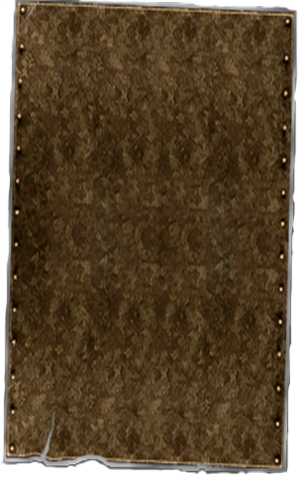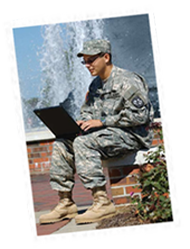







Astin, Alexander. (1993). What matters in college?: Four critical years revisited. San Francisco: Jossey-Bass.
Barkley, Elizabeth F., Cross, Patricia K., & Major, Claire Howell. (2005). Collaborative learning techniques: A handbook for college faculty. San Francisco: Jossey-Bass.
Brown, Ruth. (2001). The process of community-building in distance learning classes. Journal of Asynchronous Learning Networks, 5, 18–34.
Bruffee, Kenneth A. (1999). Collaborative learning: Higher education, interdependence, and the authority of knowledge. Baltimore: Johns Hopkins University Press.
Burden, Matthew Currier. (2006). The blog of war. New York: Simon and Schuster.
Carroll, Andrew. (Ed.). (2006). Operation homecoming: Iraq, Afghanistan, and the home front, in the words of U.S. troops and their families. New York: Random House.
Coles, Robert. (1989). The call of stories: Teaching and the moral imagination. Boston: Houghton, Mifflin.
Cooper, Jim, & Mueck, Randall. (1992). Student involvement in learning: Cooperative learning and college instruction. In Anne S. Goodsell (Ed.), Collaborative learning: A sourcebook for higher education (pp. 70-74). University Park, PA: NCTLA.
Critical and integrative thinking rubric. (2006). Washington State University Center for Teaching, Learning, and Technology. Retrieved from http://wsuctproject.wsu.edu/ctr.htm
Farivar, Sydney, & Webb, Noreen. (1998). Preparing teachers and students for cooperative work: Building communication and helping skills. In Celeste M. Brody & Neil Davidson (Eds.), Professional development for cooperative learning: Issues and approaches (pp. 169-186). Albany, NY: SUNY Press.
Gunawardena, Charlotte, & Zittle, Frank. (1997). Social presence as a predictor of satisfaction within a computer-mediated conferencing environment. The American Journal of Distance Education, 11, 8–26.
James, Alexa. (2009, August 8). Army encourages West Point generals to socialize online. Times Herald Record. Retrieved from http://www.recordonline.com/apps/pbcs.dll/article?AID=/20090808/NEWS/908080338/- 1/SITEMAP
Kearsley, Greg, & Shneiderman, Ben. (1999, April 5). Engagement theory: A framework for technology-based teaching and learning. [Personal Website]. Retrieved from http://home.sprynet.com/~gkearsley/engage.htm
MacKenzie, Ossian, Christensen, Edward, & Rigby, Paul. (1968). Correspondence instruction in the United States. New York: McGraw-Hill.
McMillan, David, & Chavis, David. (1986). Sense of community: A definition and theory. Journal of Community Psychology, 14, 6–23.
Moore, Michael G. (1989). Three types of interaction. The American Journal of DistanceEducation, 3, 1–6.
Moore, Michael G., & Kearsley, Greg. (1996). Distance education: A system’s view. Belmont, CA: Wadsworth.
Negin, Jonathan. (2002). Building brotherhood for combat. Military Review, 82(4), 27-33.
Palloff, Rena M., & Pratt, Keith. (1999). Building learning communities in cyberspace. San Francisco: Jossey-Bass.
Palloff, Rena M., & Pratt, Keith. (2005). Collaborating online: Learning together in community. San Francisco: Jossey-Bass.
Palloff, Rena M., & Pratt, Keith. (2007). Building online learning communities: Effective strategies for the virtual classroom. San Francisco: Jossey-Bass.
Richardson, Jennifer, & Swan, Karen. (2003). An examination of social presence in online learning: Students’ perceived learning and satisfaction. Paper presented at the annual meeting of the Educational Research Association. Seattle, WA.
Rourke, Liam, Anderson, Terry, Garrison, D. Randy, & Archer, Walter. (1999). Assessing social presence in asynchronous text-based computer conferencing. Journal of Distance Education, 14, 51–70.
Rovai, Alfred. (2007). Facilitating online discussions effectively. Internet and Higher Education, 10, 77–88.
Shachtman, Noah. (2008, January 31). Top general: Let soldiers blog. Wired.com. Retrieved from http://www.wired.com/dangerroom/2008/01/a-leading-gener/
Shea, Peter. (2006). A study of students’ sense of learning community in online environments. Journal of Asynchronous Learning Networks, 10(1), 35–44.
Short, John, Williams, Ederyn, & Christie, Bruce. (1976). The social psychology of telecommunications. New York: Wiley.
Smith, Barbara Leigh, & MacGregor, Jean. (1992). What is collaborative learning. In Anne S. Goodsell (Ed.), Collaborative learning: A sourcebook for higher education (pp. 9-22). University Park, PA: NCTLA.
Strickland, Thomas. (2005, August 13). Rant! Message posted to http://rev-wayfarer.livejournal.com/54995.html
Strickland, Thomas. (2005, July 12). You say Mohammed, I say… Steve? Message posted to http://rev-wayfarer.livejournal.com/51460.html
Swan, Karen. (2001). Building learning communities in online courses: The importance of interaction. Distance Education, 22, 306–331.
Swan, Karen., & Shih, Li. (2005). On the nature and development of social presence in online course discussions. Journal of Asynchronous Learning Networks, 9, 115–136.
Trimbur, John. (1989). Consensus and difference in collaborative learning. College English, 51(6), 602–616.
Tu, Chih-Hsiung, & Corry, Michael. (2002). eLearning communities. The Quarterly Review of Distance Education, 3(2), 207–218.
Tu, Chih-Hsiung, & McIsaac, Marina. (2002). The relationship of social presence and interaction in online classes. The American Journal of Distance Education, 16, 131–150.
United States Distance Learning Association. Retrieved from http://www.usdla.org/timeline/start.html
United States Military Academy. USMA Academic Program. Retrieved from http://www.dean.usma.edu/sebpublic/curriccat/static/index.htm
Villanueva, Victor. (Ed.). (2003). Cross-talk in comp theory: A reader. Urbana, IL: National Council of Teachers of English.
Weller, Robert. (2007, September 9). Troop blogs show increasing criticism of war. Army Times. Retrieved from http://www.armytimes.com/news/2007/09/ap_soldierblogs_070909/
Wenger, Etienne. (n.d.). Communities of practice. Retrieved from http://www.ewenger.com/theory/index.htm
Wise, Alyssa, Chang, Juyu, Duffy, Thomas, & Del Valle, Rodrigo. (2004). The effects of teacher social presence on student satisfaction, engagement, and learning. Journal of Educational Computing Research, 31, 247–271.
Writing rubric. (2004). ReadWriteThink. Retrieved from http://www.readwritethink.org/files/resources/lesson_images/lesson782/Rubric.pdf